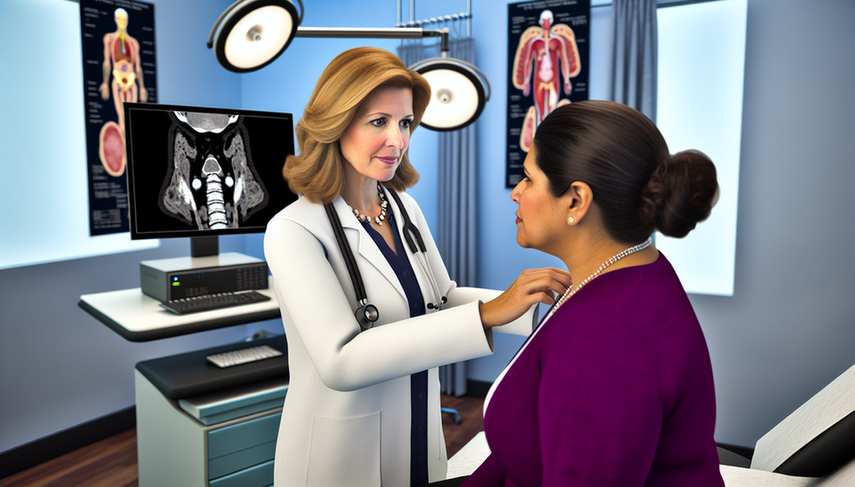Hyperthyroidism Diagnosis: Evaluating Suppressed TSH, Elevated T3 and T4, and Thyroid Scan for Diffuse Goiter

The diagnosis of hyperthyroidism is a clinical process that requires careful evaluation of hormonal levels and the use of advanced imaging techniques. Hyperthyroidism is characterized by suppressed TSH and elevated levels of T3 and T4, which can lead to significant complications if not properly managed. The thyroid scan is an essential tool for differentiating between the various causes of hyperthyroidism, such as Graves' disease, toxic multinodular goiter, and thyroiditis.
Graves' disease is the most common cause of hyperthyroidism, particularly in women, and is associated with a diffuse goiter and the presence of antibodies against the TSH receptor. The thyroid scan, using radioisotopes such as 99mTc-pertechnetate or iodine-123, allows visualization of iodine uptake in the thyroid gland, helping to distinguish between a diffuse goiter and autonomous nodules [1]. In the case of Graves' disease, a diffuse and homogeneous uptake is observed, while in toxic multinodular goiter, the uptake is heterogeneous with areas of hyperuptake [2].
In addition to the thyroid scan, measuring thyroid antibodies, such as antibodies against thyroid peroxidase (TPO) and antibodies against the TSH receptor (TRAb), is crucial for confirming the diagnosis of autoimmune thyroid diseases [3]. In situations where the etiology is unclear, the combination of thyroid scan and ultrasound can provide additional information about the structure and function of the gland [4].
In conclusion, the accurate diagnosis of hyperthyroidism requires a combination of hormonal tests and imaging techniques. The thyroid scan remains an invaluable tool for differentiating between the causes of hyperthyroidism and guiding appropriate treatment. Early identification and proper management are essential to prevent long-term complications, such as osteoporosis and cardiovascular diseases.
Referencias
- [1] Autoimmune Thyroid Diseases.
- [2] Scintigraphy evaluation of hyperthyroidism and its correlation with clinical and biochemical profiles.
- [3] Hyperthyroidism: A Review.
- [4] Thyroid nodules: Α guide to assessment, treatment and follow-up.
Created 2/1/2025
